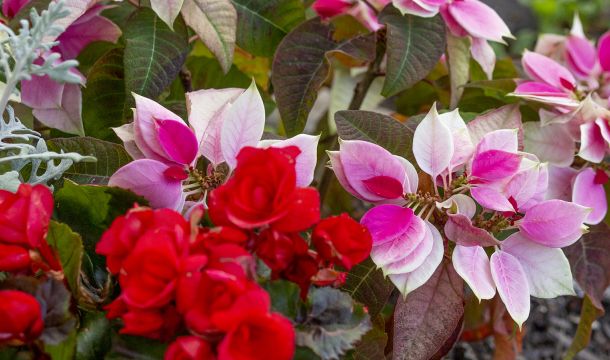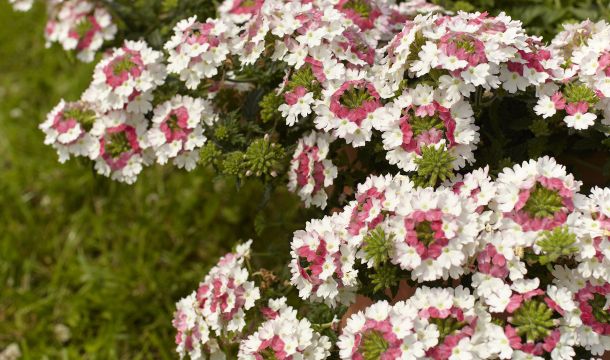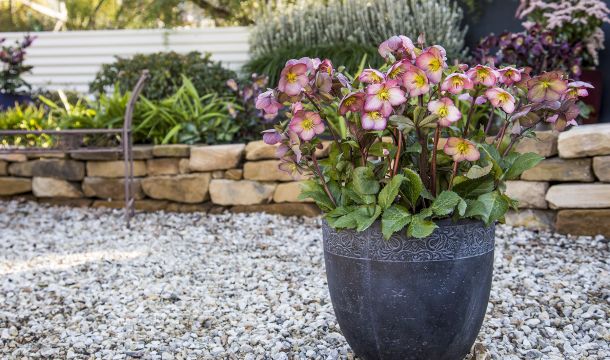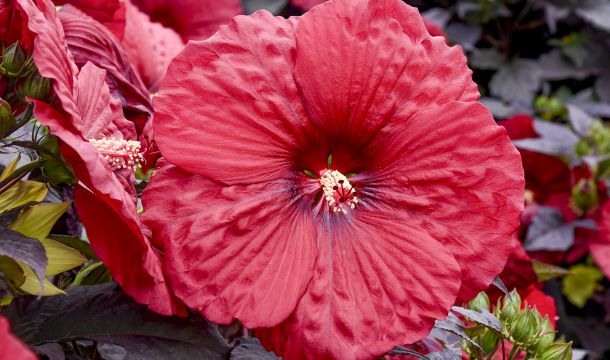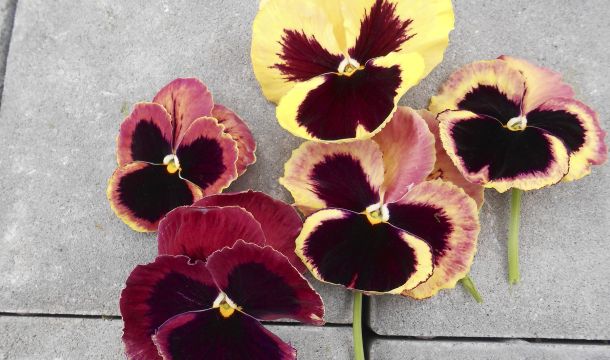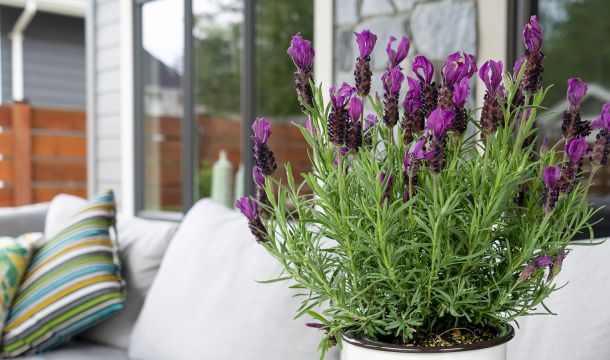Planting The Garden Poinsettia
I got into Garden Poinsettias the year I had the big photoshoot. I decided I would keep the props as houseplants for the winter, then plant them outside to see what would happen. Precious little information exists on the Internet about Poinsettias as garden annuals, so I scattered them in various gardens around the property.
Three things stuck with me after this exercise. First, Poinsettias surprise and delight visitors to my garden. “I didn‘t know you could do that,” was the usual response, sometimes with a giddy, “I‘ll have to try that myself.”
Second, they hate full sun. Noontime sunlight, even in New England, scalds leaves and withers plants. Every sample that survived had some degree of shade protection.
Third, they loved my worst garden, the one under the ornamental cherry tree with dry ground, lean soil, and one of my deepest shades that still accepts a bed. Not much grows there but boy, the Poinsettias sure did. This garden gave me the key to unlocking the Poinsettia as a spring annual.
The best selection for non-red Poinsettias occurs the week after Thanksgiving when most novelty Poinsettias are sold.
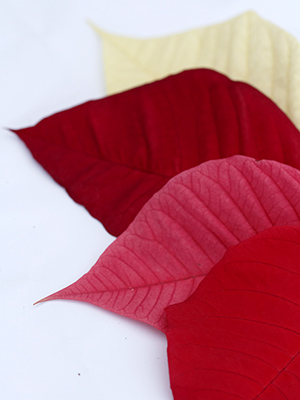 |
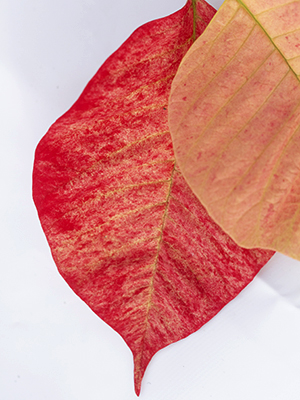 |
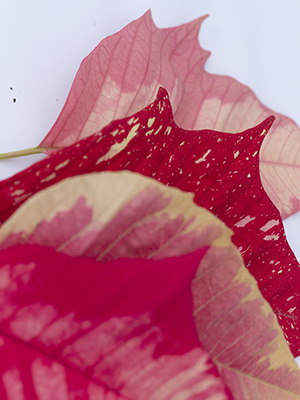 |
| Solids of White, Red, Pink & Rose | Picasso and Cinnamon | Marbles and Punches |
When to Buy
For the best selection, buy novelty Poinsettias right after Thanksgiving. Certain hard-to-get styles have their best inventory that week and no other. If you are partial to unusual forms like baskets, topiaries, or extra-tall displays, buy them early and don‘t wait. “Only the reds sell after the first week in December,” is the general industry consensus and most retail shelves reflect that attitude.
I do buy my reds the day after Christmas, especially if I want stands of red or mass plantings of Points. No one has thrown out their stuff yet, the places are still open, the crowds are not there, and most stores offer a 50% discount on their remaining stock. Big, bold, and red is unusual for a shade garden so it’s all good, but if you like treasure hunting you can bring home a haul of alternatives at great prices, also.
When selecting pots, size does matter somewhat. If you can handle African Violets, then Poinsettias in small 4-inch pots (or the wee little ones) won‘t bother you. If you are new to the winter houseplant game, larger pots like 6-inch and 8-inch have bigger buffers for maintaining soil moisture over the dry winter months. Poinsettias don‘t like the *flood and drought* strategy that brings them to the brink.
Poinsettia bracts make good table decorations. They will root out if you transplant them to potting soil in a couple of weeks.
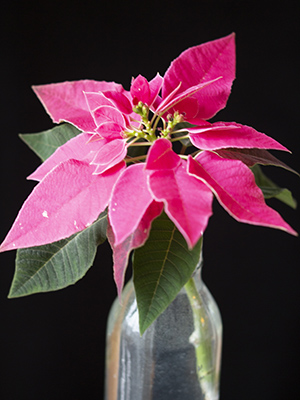 |
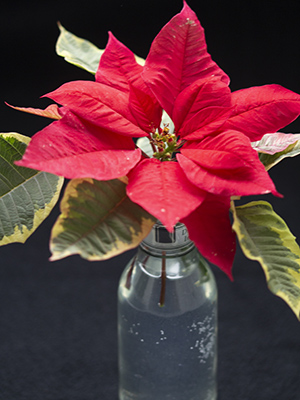 |
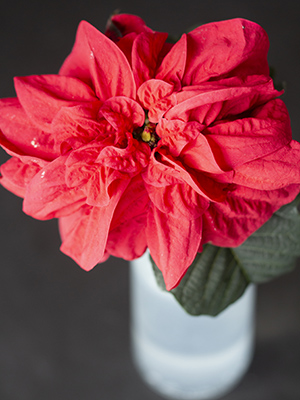 |
| 'Princettia Dark Pink' | 'Tapestry Red' | 'Winter Rose' |
Winter Houseplant
Winter sun isn‘t that strong so you can keep Poinsettias near any source of light as long as they don’t touch a glass pane. I keep some plants in dim rooms to brighten up dreary days, so I rotate them to sunny windows once a week where they can soak in some sunshine. They aren‘t mushrooms but they aren‘t delicate wisps of cotton candy, either. They do fine in any temperature that doesn‘t require a coat.
Poinsettia stems are stiff and brittle so they can break with rough handling. When I snap a bract accidentally, I place it in an empty bottle on the dining table as a decoration. It looks great and roots easily. After about a week or two, I transfer it to potting soil and give it steady sunshine.
The best spring plants result from steady and consistent watering over the winter. If the leaves curl on the edges (Warning!) or wilt (Danger!) the plant will come back but cell death has already occurred. Each plant has a limited supply of colored bracts, so routine watering is the best. If the soil never seems to stay wet, consider repotting with standard potting mix.
Sometimes, new color still emerges from the top of a plant when you get it home because it hadn’t finished all its business when placed on the retail shelf. Younger plants may produce more color in January, but all this has been preprogrammed by Mother Nature earlier in the year. You have a limited supply of color; the trick is to keep it.
All of the Princettias have an interesting zipper-style of growth in the garden unique to the series.
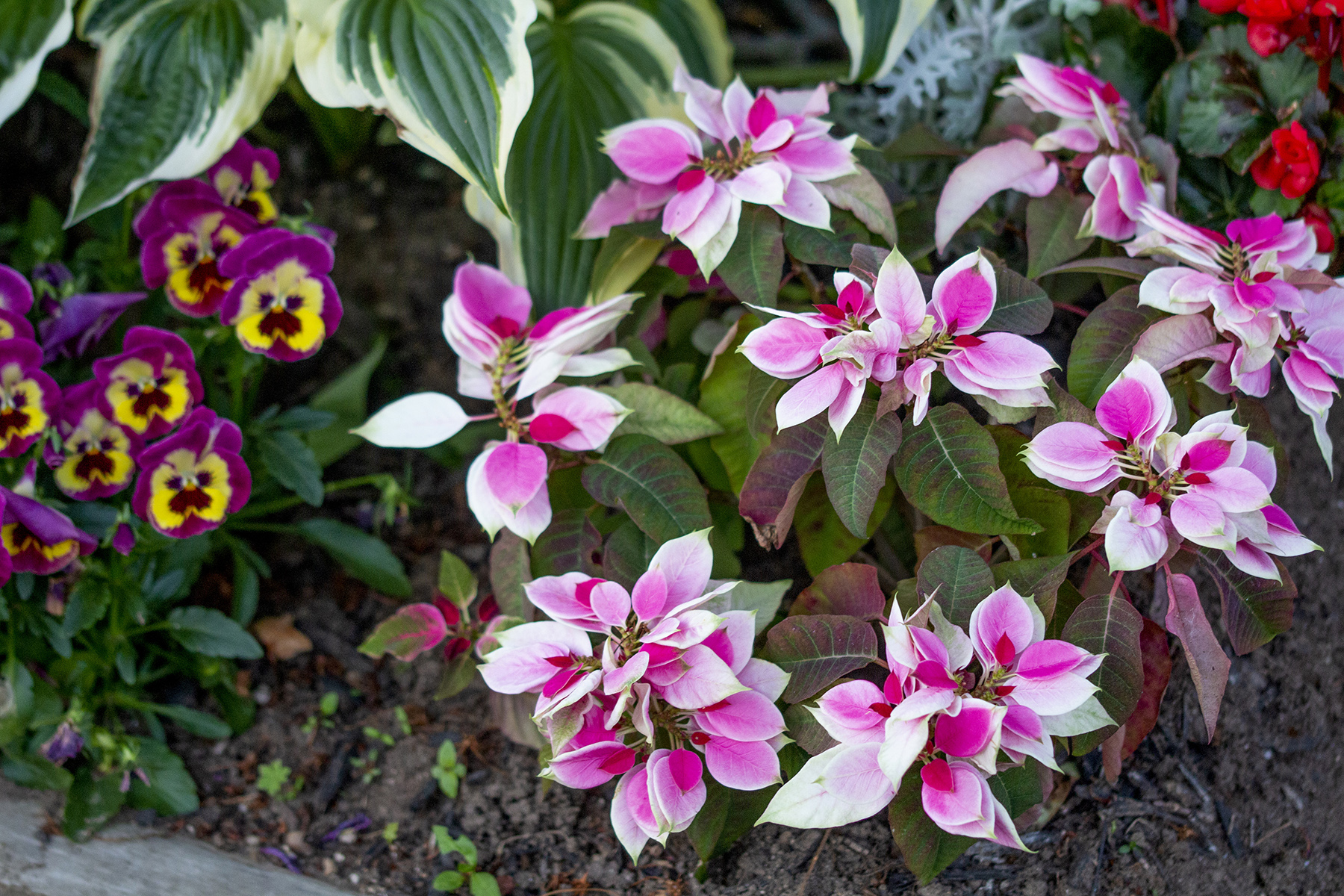
Spring Shade Garden
I plant out my Poinsettias when the daffodil blooms start to fade, around mid-April in southern Connecticut. The cool weather doesn't faze them so long as frost doesn't appear. Daily water for about a week helps to establish them, especially under the ornamental cherry tree. Natural rain does fine afterwards.
My cherry tree garden has always been a bear to populate. The soil is dry and lean because the canopy overhead sheds rainwater. Only morning and evening sun peeks in there, and the tree roots suck the remaining moisture out of the soil. Lawn grass won‘t grow there but Poinsettias love it.
Especially important is the lean soil, and this brings us to the “trick” of Poinsettias. All those colored bracts are old growth, the results of last year‘s efforts. Once they drop away, that‘s it because new growth emerges green. Therefore, the color lasts longer if the plant has no incentive to grow very much, and every incentive to keep what it already has.
Plant Poinsettias after the daffodil blooms start to die back.
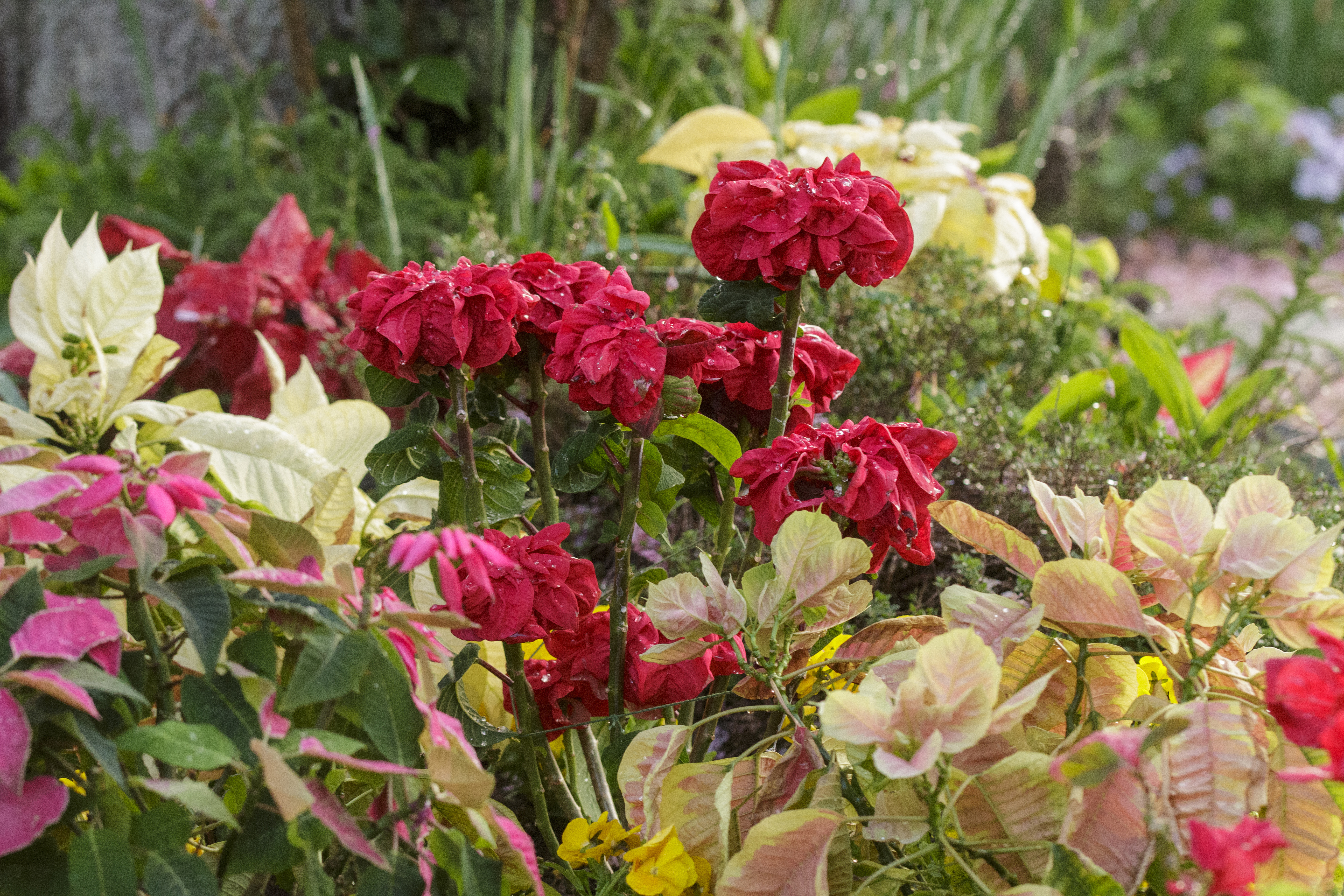
My Big Mistake
I learned my lean soil lesson this past spring when I amended the soil in my cherry tree garden. The new bed was extra fluffy and rich with humus because I compost a lot. Everything I planted loved the new soil, and the Poinsettias went to town. They started pushing out new green growth over the top and dropped the old color much sooner than expected. A couple of corners in front of the tree trunk did not get revised and this is where the color lasted the longest. Then my epiphany occurred: Poor soil means the spring color lasts much longer. Rich soil means the green growth overtops the old bracts quickly.
The summer look for Poinsettias is different than the spring look. Well-grown plants are herbaceous and a little shrubby in nature. If the soil is lean, most plants keep the same size. If the soil is rich, most plants double in size.
While most Points have tipped leaves and a dome-like shape, some outliers do exist. 'Christmas Mouse' (which does get large) has big Mickey Mouse ears for leaves. 'Winterstar', a very popular white, has chartreuse leaves that contrast well with the bronze leaves from the SunPatiens series of Impatiens. 'Winter Rose' remains a pillar for the season.
Poinsettias become small herbacious shrubs with dark leaves in the summer. An exception is 'Winterstar', a white Poinsettia pushes out chartreuse leaves for the summer. They contrast well with SunPatiens.
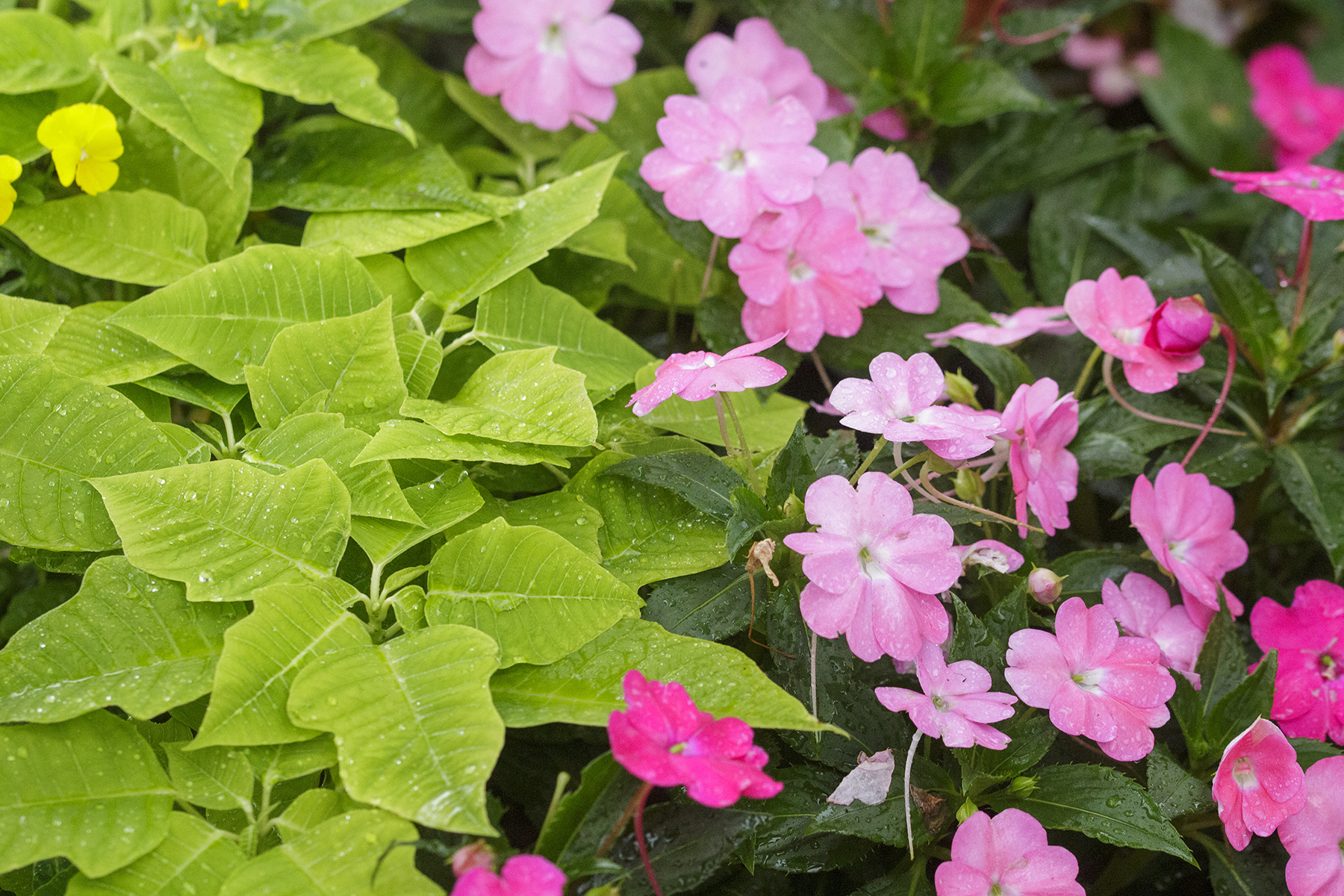
Some Final Advice
I should point out that Garden Poinsettias are once and done as spring annuals. They do not rebloom with color for Christmas. The short summer nights in New England do not trigger the color change in the bracts. Once plants drop the old bracts, they stay green until frost.
The photo shoot that started the garden: Princettia Pure White with Cellist Karen Sue Miller photographed for a greeting card line.
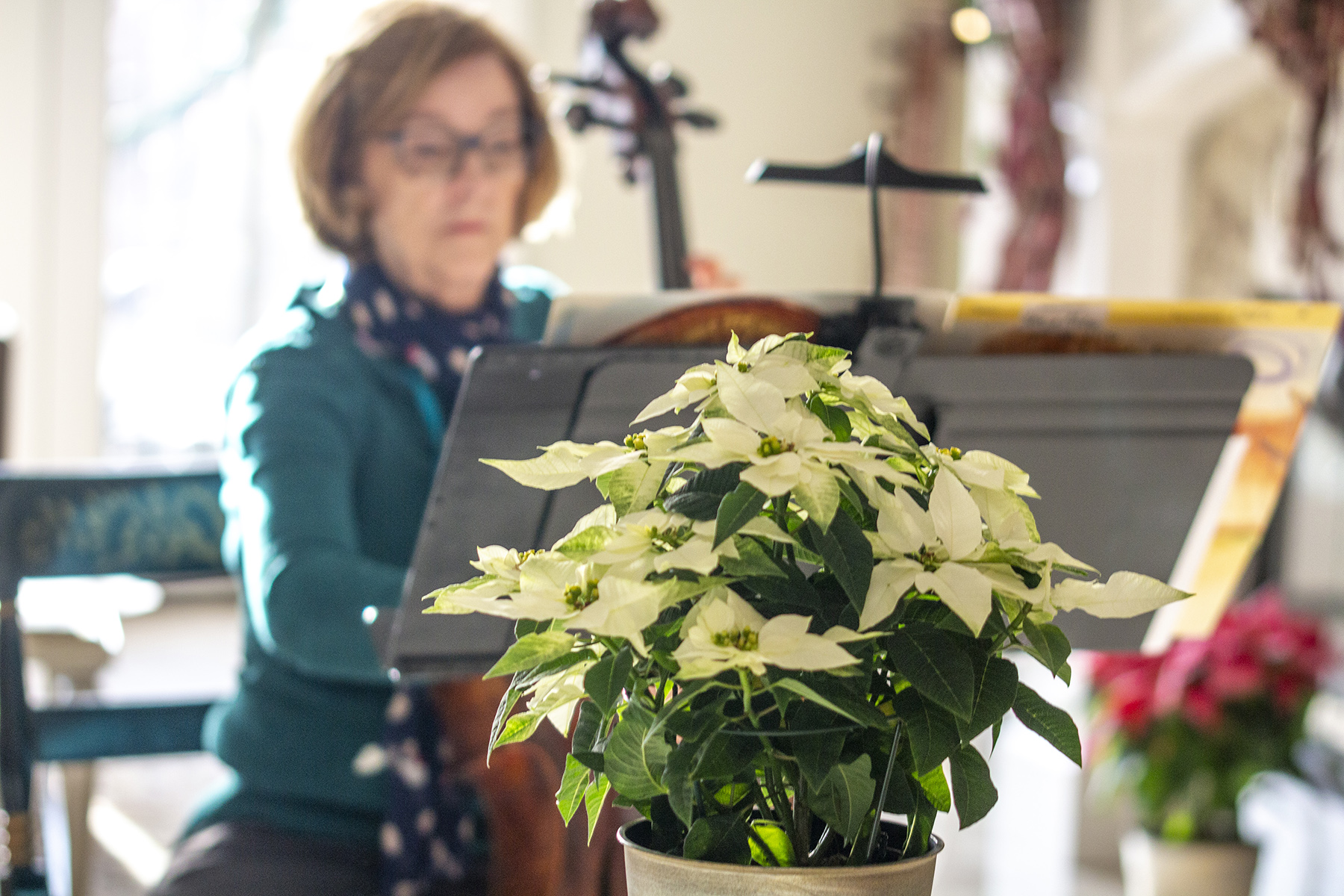
Popular Articles
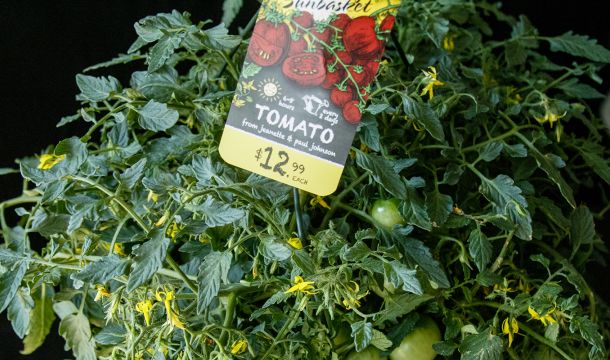
Trialing Edible Baskets
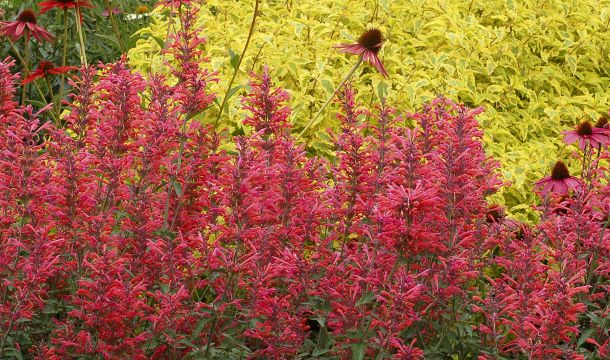
The Arthouse Expansion of Agastaches
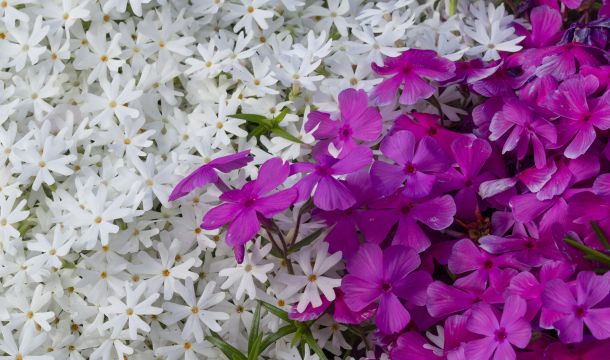
The Strengths Behind Phlox Subulata
